Introduction
30.9.2020
About this text
This text is a continuation of the performative lecture I presented in the Networked Actor Theory (NAT) event last year. The main intention of this textual experiment is to attempt to re-create the transductional relationship between seemingly disparate elements, belonging to different contexts, dimensions, or domains that took place in the performative lecture.
6.11.2020
The lecture-performance itself was an attempt to radicalize Edumund Husserl’s theory of “phonic signs” by questioning the apparent immediacy of linguistic address. This was done by focusing on sense-affective operations of the disparate temporalities of linguistic and mediatic address.
29.10.2020
The NAT presentation focused on what is done rather than on what is represented. Like the presentation, this exposition takes a media-archeological approach: I will try to infuse the textual dimension of my study with the same kind of movement, to bring together knowledge and practice, invoking the epistemological and sense-affective aspects of the situation together, operating and performing the object and the medium of the study at the same time.
1.11.2020
This exposition offers textual fragments and experiments that are assembled according to a dialogical logic: they are persuaded to perform, to react to each other. This happens over and through time and space. I have left the creation dates of the fragments visible, so that the reader may get an idea of the “internal polylogue” of my research process, taking place over time. It shows how the ideas, propositions, and actions emerge, get shaped, and operate in dialogue with other ideas, propositions and actions from the past, present and future.
3.11.2020
The fragments presented in this text outline and discuss my research project from several different points of view, starting from actual artistic practice, advancing from there to the more specific issues of artistic research, critical and deconstructive strategies, and the temporalities of theater and media.
7.10.2020
This is also a bending exercise, in the manner of the practice of circuit-bending electronic devices, especially electronic gadgets and musical instruments, as invented and cultivated by Reed Ghazala. Circuit bending aims to bring about “the concept of chance electronics, the mechanics of clear illogic, and how you yourself can become a new species by actually melding your body with the electronics of the circuit” (Ghazala 2005, 12).
My focus of attention, however, instead of electronic circuits, is on discursive circuits, the meaning-making machines and matrices. I seek to bend them, to bring about something alien and perhaps beautiful. Or, to revert to Jean-François Lyotard’s terminology, to bring out the figural within the discursive.
6.11.2020
The figural is something that foregrounds the materiality of the text, the letter, their “thickness.” It encourages us to stop regarding the text as something transparent – as a window opening toward some stable meaning that rises above their instantiation. “The letter is a closed, invariant line; the line is the opening of the letter that is closed, perhaps, elsewhere or on the other side. Open the letter and you have image, scene, magic. Enclose the image and you have emblem, symbol, and letter’’ (Lyotard 2011, 268). The figural “defines a semiotic regime where the ontological distinction between linguistic and plastic representations breaks down” (Rodowick 2001, 2). The figural is an especially powerful concept when discussing electronic and digital media, as the regime of signs is more and more transformed toward a signaletic regime – an essentially unstable configuration.
9.10.2020
It’s as if a line…
“It’s as if a line were a sentence pursued by other means. A sentence is a demand. Since it has been preceded by other lines (outside and inside the picture, in culture, in the imagination and on paper) which would require following up, a line is also a kind of response, a comeback, a way of following up on the demand carried forward by the earlier lines […] The line bears a responsibility. It takes its cue from other lines; that is how it is responsible, how it tries to discharge its responsibility.” (Lyotard 1988, 457)
I have attempted something similar in this text, to try reveal in a textual exposition something that might be thought of as “figural.”
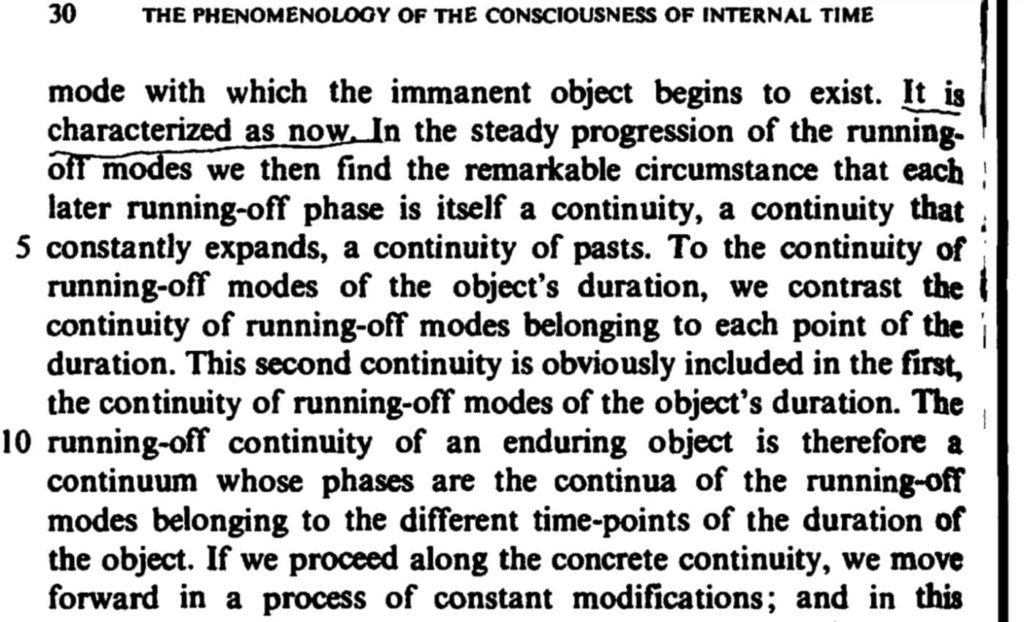
22.10.2020
I take this “figural” to be a visual equivalent to “sonic,” that is, something within the auditive that cannot be caught within the web of signification. A transposition.
8.10.2020
Collected here are a series of incidents, attempts, successes, failures, moments of clairvoyance, and moments of discontent. What unites them is that they all have made me think, think again, stop, consider, work – change direction, orientation, and my way of working.

2.11.2020
My research process has engendered a peculiar sort of a sensitization – an almost synesthetic capability of recognizing almost everywhere the traits of the sonic tempor(e)alities that I am chasing. I have decided to incorporate a few of these unexpected occurrences as a series of failed mediations that make the text, sound or ideas contained in them perform in an unexpected manner. These failed mediations actualize in the medium a quality that Brian Eno has described as follows:
“Whatever you now find weird, ugly, uncomfortable and nasty about a new medium will surely become its signature […] It’s the sound of failure: so much modern art is the sound of things going out of control, of a medium pushing to its limits and breaking apart […] the excitement of witnessing events too momentous for the medium assigned to record them” (Eno 1996, 283).
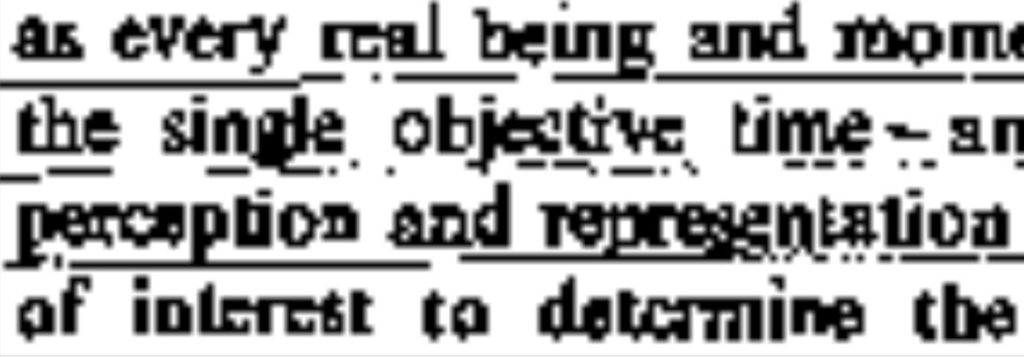
8.10.2020
These experiments attempt to exert a certain spectral quality to what is being said and done, so that the words and actions seem to be more indistinct. Spectral quality comes from the process where the demarcations and fringes of meaning start to oscillate between various shades of meaning and non-meaning.
The space between what is written, thought, discussed, and stands in relief to the words becomes activated: what exactly is the black, the signifying, the mark, the signal, and what is the background, the receding, noise-like in writing, what meaning is being brought forward if the perspective and distance between, the figure of speech and text – and the (back)ground – is somehow skewed?
One possible way to experience this is through the super-magnified less successful photocopy operations and failed scans set forth here. They present a sensitization – to failure, to the emerging figural influence, a descent into the fuzzy interdomain of the discursive and the figural.
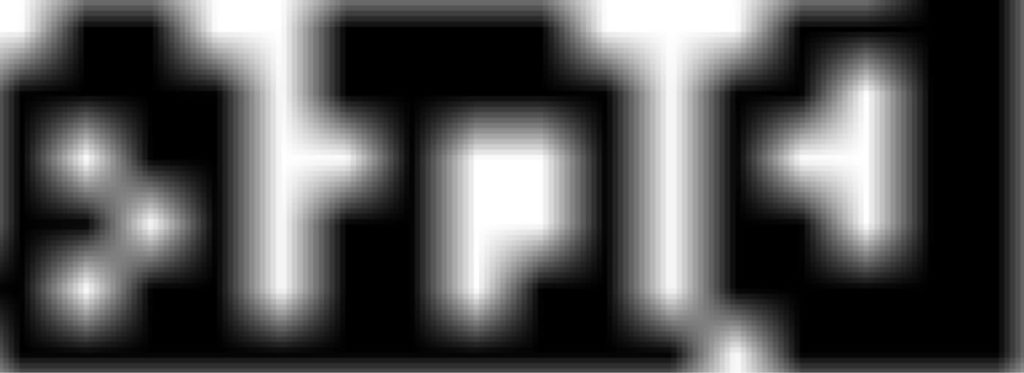
Sound design as practice – with what do I work?
2.11.2020
The question that has bothered me for most my career and practice as a sound designer has remained essentially the same.
9.9.2017
Of transductions
What exactly is the material or dimension that I, as a sound designer, work with? What is that event, object, or gesture that a certain moment in a performance produces, and offers as material for me to work with? Surely not solely the pressure variation in a certain point, space and time? Not some abstracted quantities of linguistic information? What is essential is something entirely different from pressure variations, caught by the microphone or created by the loudspeaker – the technical – or conveying information – the theatrical? Certain atmosphere, feeling, of inflection of the voice; a density, an affect? A depth, perhaps?
11.11.2017
Re-orienting sound design?
The greatest achievements during my career have been the moments when I have succeeded in creating something beyond the utilitarian, the needed, the obvious. Something that has a seemingly magical quality to it, something that has infused the scene, the moment, the atmosphere with a quality that is present but not directly connected to the “rational” or the “intelligible” in them. A barely detectable change in the manner with which the actor’s voice is distributed in the space. An extra weight and slowness in the sounds of moving bodies. An imaginary transformation of space, as if the walls were slowly moving back and forth. A condensation of the final silence above the audience, drifting slowly toward the exits.
These moments have been serendipitous and rare, and they all have required favorable circumstances; brilliant colleagues, spaces with favorable character for the needs of the production, suitable technological resources, exceptional sound work from me, etc.
It is that elusive “something else” that I am after. Something that is born “in spite of,” as an errant by-product, almost. But at the same time something that is intimately connected to the process, intrinsic to it, but not being able to emerge for most of the time. “Something else” that I could not find words to describe for a long time. At the moment I call it the poietic actualization of the techno-embodied event.
11.11.2017
Something strange happens then. Something that transgresses the normal, goes beyond the capabilities of habitual listening, the audile technique. Something emerges and that something addresses the sonic sensibility of the participants. It is clear that, for some reason or another, “magic happens.” It is distinguishable; it has a duration, a singular essence, amidst the general flow of events. Then it ceases, goes away. A sudden resonance between unlikely components/events?
27.5.2018
The “corpus” and the “magic” of technology – the cybernetic approach
The magical aspect of human-technology interaction. How can we advance toward it? How can we grasp it? The feeling of magic happening onstage. What does that magic consist of? Is it a presence? The technology escaping the role of a tool, the position of being an extension of my agency. The actualization of a potential that is hidden, hiding, latent until this specific moment of its unfolding. Virtual instantiation.
Why is the performative situation essential to this instantiation? What is it needed for, so to say? Why not just state that this process, this inter-corporeality is everywhere. Why do we not see it, feel it, feel able to touch it in the everyday? The performative situation is different. It is reduced (without any guarantee of it remaining that way, reduced), rarefied (but in constant risk of being invaded), focused (in constant risk of being distracting, distracted, distractive). In short, it is a metastable, hyper-functional setup, always ready to flip into another state, another reading of the present, its temporal constitution. This hypersensitivity to the present, presence, presenting is reminiscent of a séance. The situation is rarefied, resembling a vacuum. The few remaining elements create a state of dispossession, withdrawn from contact to anything. And when this elusive anything, almost nothing, in the form of a (corporeal) presence, presents itself, it acts as a catalyst and – in a reaction of collapsing into each other – the sensitive, reactive, elements interlock, establishing a momentary mesh, assemblage of relations that turn into an almost-meaning (sign? affect-state?), a resonance that is at the same time most individual and most general.

Artistic research as practice, with what do I work?
10.1.2020
In medias res?
When transposing the focus of the work from the artistic practice to the domain of artistic research, the main challenge for me has been to preserve the nature and the results of the artistic working processes. The domain of research resembles in many ways the domain of artistic practice but there are crucial differences. For me, the central issue has been the problem of making present the interaction of the corporealities present, the whole sound design machinery and dynamics of the performative moment. How can we start from the now, the moment so impossible to grasp?
7.8.2020
Presence?
Theatrical presence is a concept that gets thrown around quite easily, without much consideration of how exactly this presence is discursively construed or framed. This seemingly unproblematic and self-evident concept should be subjected to much closer and more rigorous scrutiny.
Perhaps one helpful tool/strategy for navigating the various conceptions of presence and their groundings in a multitude of philosophical, theological, aesthetic, ontological, social, and metaphysical underpinnings could be to consider more carefully and deeply the medial qualities of theater and performance. Not the event as such but the event in-service-of, in-order-to, as-a, etc.
26.2.2016
The ontological grounding of sound design
The multitude of possibilities sound has to influence us stem from its dualistic nature: it oscillates between its immaterial, vague, and ephemeral and its physical, concrete, and material natures. Depending on the circumstances and the disposition of the listener, the expressive possibilities of sound unfold in very different manner. The immaterial and ephemeral conception of sound emphasizes its mediatory nature, sound-in-service of something like speech or music. On the other extreme the concrete, material conception of sound emphasizes the material agency of sound as a part of a vibratory continuum, as an agent of an ontology of vibration, connecting together all that exists. This is an eternal movement that ties together our world from gravitational waves to weather systems, tectonic processes, the functioning of the ion pumps in our cells, the noise of blood flowing within us, the ways the plants and animals communicate, and so on.
The world, regarded as an architecture of vibrations, is quite different from the linguistic-cultural world. It is a world of flat hierarchies, of affect and affection, a web of matter and processes.
As an artist working with sound, I face an intriguing challenge: how can I transcend and bridge this gap between the semiotic signification and the pure, material energy of sound? How can I loosen the extremes in such a manner that mediation between them becomes possible?
9.9.2017
My practice is intimately connected with translations between a multitude of different domains: the acoustic, the electronic, the discursive, the medial, and so on. The translation of real-world phenomena to abstracted numerical representations is considered unproblematic, simply a matter of conversion. Conversion, however, presupposes that the two sign-systems are commensurable, and that the act of conversion between them is a process of homogenization and of establishing equivalence.
From the perspective of my research, the most productive and interesting instances are those when transduction fails. When it fails to be transparent and vanish after completing its task of mediation, building something (interactive, perhaps) more than just a neutral mapping of one quantity to another. Fails by translating something unintended. The same applies to linguistic address; an interesting terrain emerges when it starts to de-struct, for one reason or another. A terrain containing loose fragments of meaning and signification, recombining in unpredictable ways.

10.6.2016
The proletarian dimension of sound design work in the analog domain:
You have to work with your hands. You have to be manually skilled, have proficiency, even virtuosity. What is possible, imaginable, in the analog domain is brought into reality time and again through manual labor, using one’s hands. Within the digital domain the work is different in nature. It is coded, symbolic, abstracted; “grammatized,” to quote Bernard Stiegler. The identity of a digital designer is that of a meta-worker, distanced from manual labor, from a bodily identity. Digital versus gestural; metaphorical versus material.
12.7.2017
Artistic expression as a medium of research? Why is it needed? What does it convey? What is the gap that it attempts to fill, and why is it essential that this drive exists? Toward an elusive something that the epistemological or the analytic cannot grasp? For what is the hand, the body needed? The risk of failure?
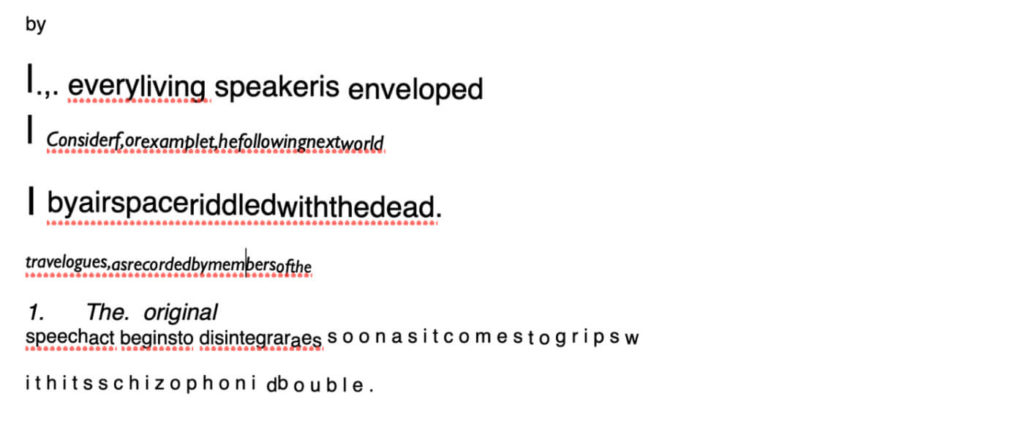
15.8.2017
I have not set out to invent anything, I am interested in utilizing and scrutinizing something that exists already, something that someone has deemed worthy enough to be created and utilized, according to some (perhaps quite obscure) set of expectations and ideals. My focus is on deconstructing, reverse-engineering and appropriating devices, technologies, techniques, and conventions. Taking them apart and rebuilding the elements, be they material, technological or aesthetic. Identifying and repositioning the invisible assumptions and distinctions underlying contemporary practices. Again, I am not interested in furthering the conceptual and practical production of “good sound,” but in taking apart the already existing materializations of “the good” and “the preferable” within sonic practices.

17.5.2019
Post-NAT event
The devices used in the presentation: The phonogène, Turing machine, Analog delay. They borrow their names from the history of electronic music and theory of computation. What knowledge do the sonic devices used in the NAT presentation, or in the “Bending Artaud” experiment presented above, contain or reveal? As themselves or as parts of a network? As embedded qualities, something that is realizable in any configuration they partake? As emergent qualities that the configuration, network, or assemblage is able to evoke in them, or perhaps more specifically, as something agential that they can provide the network with, in order to increase its capability?
The devices themselves are fractal in nature; they contain boxes within boxes, decisions within decisions, but also metaphors within metaphors. That is perhaps the most interesting dimension of their agential essence. A sonic Turing machine is a metaphoric device, commenting on the one hand on the conceptual, never realized Turing machine, and on the other, on the cybernetic paradigm, bringing their modes of operation into the sonic domain. Or is the original Phonogène the technological pinnacle of the Musique concrète movement, incorporating its epistemological and aesthetic ethos into a technology? In that sense they can already be regarded as media-archeological in nature, but for me the real value of the media-archeological method is revealed in operating the contemporary renditions of these devices. At that moment my manner of being and relating to the world – to its epistemological and sense-affective dimensions – is transformed. I am playing the instruments, but also the processes and the aesthetics embedded in them, and at the same time, they play me.
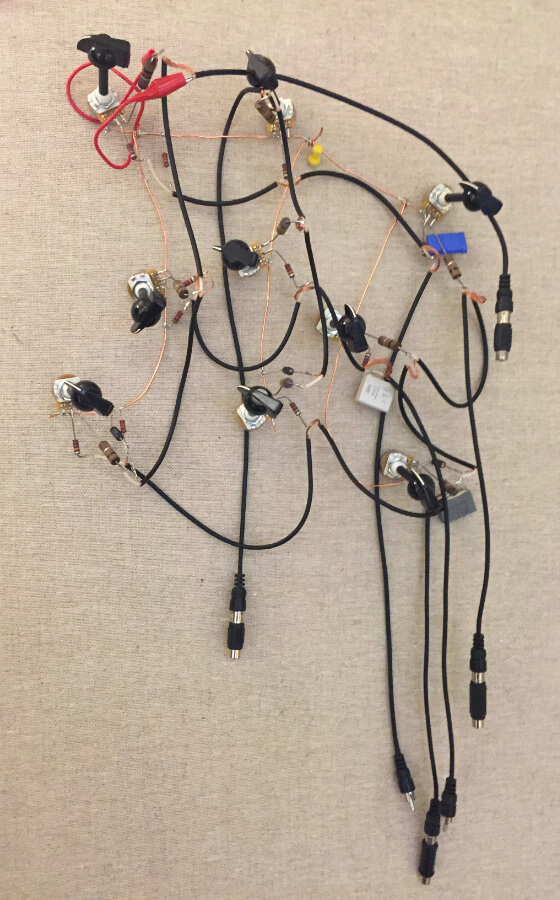
Temporality as an essential dimension of practice, research, and commentary
23.10.2020
How can we situate research concerning temporality into temporal dimension? To destabilize signification is also to destabilize simple linear temporality. Words create time, a certain chronology (a wordology, perhaps?).
19.8.2020
Of temporalities
Temporalities clash onstage. That is the power of theater. That is what has made theater so interesting and resistant toward a multitude of societal and aesthetic developments during its existence. Some of these temporal layers seem “natural,” given, in the way everyday activities take place at their habitual pace. Every day, every week, every year we encounter familiar events, routines, and rituals. Physics tells us that the flow of time is unidirectional. We know that we will be dead someday. We know that the performance we attend will end in a few hours. We anticipate the length of a sentence, its end.
Some other temporalities may have a more vague, even spectral quality. Scenes of tragedies, disasters, and violence may exert an uncomfortable feeling of a past still haunting us. Other places and situations might give us feelings of premonition, that something is imminent. There and then, we can feel the pressure of time lying upon us, as a corporeal sensation.
Theater uses specific methods and techniques to deal with and modulate the flow of time, and its perception. Different elements, corporealities, materialities are in a constant temporal dialogue (dispute?).
The cornerstones of different theorizations of theatrical temporality have been the accounts that posit various operations that create and utilize presence as the central qualities of theater. Being-present, making-present, having-presence are regarded as the essential means and media of the classical drama. Theater and presence are so closely associated that that they seem almost synonymous.
On the other hand, the accounts emphasizing presence have been met with deep skepticism. They have been seen as mystifying the process of performing and spectating theater, bringing a deep metaphysical or theological layer to these accounts. The emphasis on the immediate (that is, unmediated) essence of the theatrical event tends to overshadow the fact that these acts are always already mediated, rehearsed, represented, delayed, and repeated in their seemingly immediate present quality. Furthermore, mimetic acts and operations are their defining.
I have come to realize that my work is situated right in the midst of this clash.
27.8.2020
Writing as a temporal strategy
What is specific about writing? Is it necessary? Is writing, regarded as a temporal strategy, superfluous? Would speaking, the voice, suffice? Would sound, everything that it can grasp, suffice? As opposed to writing, as a flash of lightning, illuminating the whole landscape at once, but caught afterwards only as a linear succession of graphic symbols, by the process and work of writing and reading. Temporality-turned-to-spatiality-and-succession. Could writing, too, be regarded as a comparable temporal strategy, able to mimic sonicity? As a tool to yank time out of its joint, to stop the endless parting of the never arriving “now” into past and future?
De-struction as a facilitator of a poietic process
10.10.2020
Translations/Transductions
My strategy in various experiments has been to loosen and take apart the translational process, in order to enable unwanted, unexpected things to happen, take place, emerge. To make the boundaries more porous, to reveal the hesitation, to loosen the structural matrix. To let the machinic and algorithmic logic get a little bit lost in the process. To let in the atmosphere, the typographies, the silences, the noise, and the non-signifying, sign-like entities into the system of signification. To pause it, to let it get lost, to skew it.
30.9.2020
(Re: 2.3.2017 Of functionality:)
The categories of functionality for my purposes might look something like this:
- the functional
- the idiosyncratic
- the sightly dysfunctional
- the abnormally operational
- the barely functional
- the almost functional
- the non-functional.
- the almost functional
- the barely functional
- the abnormally operational
- the sightly dysfunctional
- the idiosyncratic
This classification could serve as a guideline for working with, bending, and breaking the limits of mediation. For different media these limits or preconditions of functionality are, of course, different. What interests me here is the nature of the terrain that can be entered through this process. The terrain of failed mediation, something not-as-mediate any more, but somehow still containing its character, its legacy and history, albeit in inactive, not-presently-functional state. A machine stopped, signification not active, a meaning deferred, more akin to a blueprint of a process or structure.
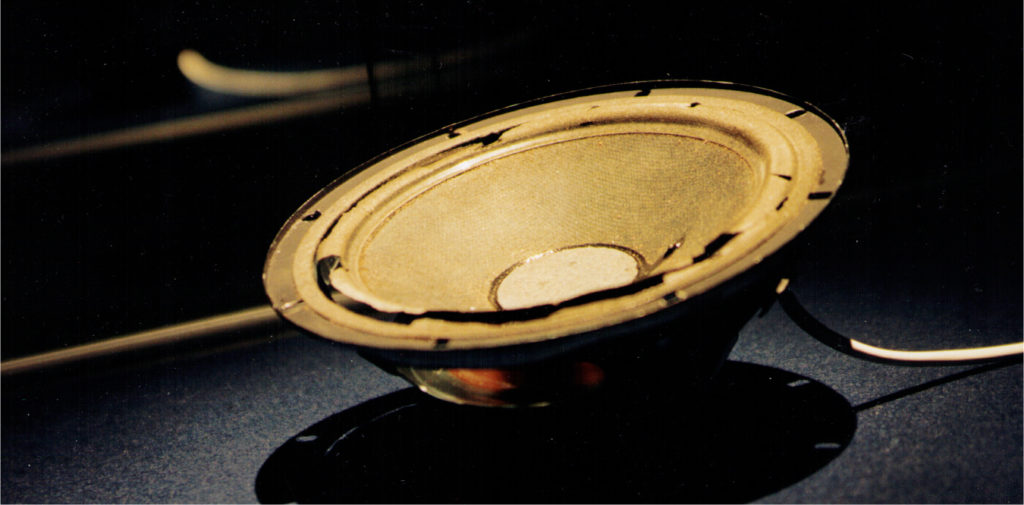
16.1.2016
The lo-fi ethos seems to suggest something quite similar. It is foregrounding the very process of mediation, and its inevitable artifacts and idiosyncrasies, to be the very source and guarantee of the truthfulness, the process, and the material; performance. If something is mediatable it will have been taken place. The interesting point here is the “taking place” of the preconditions of the mediation process. Lo-fi seems to claim that the performance, the presentation of something, which is the very requirement for the mediation to be possible in the first place, can be much more varied. It can be a performance of editing or assemblage, an act of sampling or referral – an annotation.
7.10.2020
So, a performance – but in the ontological dimension of the media space, within the operational affordances provided by a specific medium.
This text – how can we make present the performative outside the performative moment?
12.10.2020
A continuation, transposed
How can we advance from a lecture-performance to a textual performance? How can we transpose the kind of performativity achieved in the meeting between a lecturer-performer and the audience to the textual domain? An attempt to create a metaphorical sound design performance. An attempt to make text sound, to break the silence, the seemingly immobile realm of signification to move, to perform.
9.10.2020
I am taking the presentation I gave in the NAT event one step further in the series of translations and transductions, progress and retreat – operations necessarily temporal – that every research project consists of. The central concept scrutinized in my presentation was a phenomenon called “the specious present,” that is, the impossibility of seizing or inhabiting the exact moment of the present taking place. This took as its point of departure Edmund Husserl’s seminal text “On the Phenomenology of the Consciousness of Internal Time” which I contrasted with its later critique and the contemporary neuro-scientific findings describing the processes creating human time consciousness. So, the theoretical exposition could in itself be regarded as heterochronic, playing with the different conceptions of temporalities in the texts discussed, but also with the situation itself. This heterochronicity was still enhanced by using various sound-capturing and modifying devices in real time to interfere with the linear temporality of the spoken text.
28.10.2020
This zooming into quite complicated and perhaps unusual qualities of the performer’s voice and the sound encountered in the performative moment is not easily grasped in writing. Lectures and lecture-performances are different: when we are immersed in the performative moment of a lecture-performance, these aspects of voice and its performative essence, various transductional relations are present (provided that this presence can be grasped or regarded as being present in the first place!). The transformations, manipulations, and de-structing of the mediating processes can be demonstrated, felt, experienced.
6.11.2020
The challenge has been to make at least something of that present, to put the experiential in written form. The attempt to achieve something comparable has been realized here by the very same methods, transposed, that I am applying to the sonic in my research.
14.4.2017
The difference between linguistics and semiotics according to Thomas Sebeok
A structure that is non-linguistic is a relative and non-stable system, connected to other structures or meaning-making systems. I can imagine a way here from the sovereign solitude of linguistics toward other entities and other actants and the systems they are associated with, and also a possibility of selecting and encouraging systems to collide or juxtapose upon each other. (Could this be a way to explain to myself my ever-present interest in sound, especially performative sound?)
It could be rooted in the infinite possibilities of creating these systems – alongside other systems – ecologies of systems, interpenetrating systems, colliding and colluding systems, systems traversing through each other. So goodbye to speech and voice against sound, goodbye to incidental sounds, depictive sounds, sounds in the service of something, creating emotions, and affective moods. Welcome to systems of sounds, systems of other actors, discourses, dimensions, co-existing, attuning.
26.4.2017
Sonic technologies could be also be examined within the contexts of posthumanism and cybernetics in the sense that they offer, through their ability to create vocalic bodies, an opportunity to examine alternative embodiments in connection with the “normal,” habitual way of establishing connection and correspondence between the voice and the body it on the one hand inhabits and on the other creates. This connects directly to Cormac Power’s notion that theater’s specific potential is “to interrogate our experience of the present” (Power 2008, 7). This is not so much about affirming or rejecting presence, but putting forward a possibility of examining these issues as they unfold before the audience.
28.4.2017
About sound, voice, embodiment, disembodiment, partial embodiments
Why is it more feasible to talk about disembodiment than any other possibility opened through the mediation of the voice? Why the “dis-,” as “implying removal, aversion, negation, reversal of action,” “to strip of, free or rid of, to bereave or deprive of the possession of” or “denoting the lack, or absence, of the thing in question” (Oxford English Dictionary)? Why the autopsy, the gutting, the violence? Why not augmentation, enhancement, empowerment? Multiple embodiments, partial embodiments; following Steven Connor’s notion about the uncanny ability of the disembodied voice to create a body for itself, its needs and purposes? Why not turn toward plenitude?
I would like to propose a project of phonocentric alchemy; an exploration of the interdomain between the collapsing linguistic signification and the actualizations of generative sonic possibilities. To enter the area between the semiotic and the sonic flux, between structure and genesis. And, in the same gesture, to lift the electronic from the role of mere amplification, reproduction, or duplication, to a facilitator of generative and poietic dynamics.
9.1.2016
It is the shaky superposition of perceptions of presence with the technological codifications and transmutations that brings about the seemingly unceasing fountain of strange occurrences on stage.
“any conscious act, let it be an act of perceiving, thinking, moving, or whatever, is a temporally extended, gradually and continuously unfolding act with a certain, nonlinear temporal structure.” (Vogeley and Kupke 2007)
References
Eno, Brian. 1996. A Year with Swollen Appendices. London; Boston, MA: Faber and Faber.
Ernst, Wolfgang. 2014. “Temporalizing presence and “re-presencing” the past. The Techno-Traumatic Affect.” In Angerer, Marie-Luise, Bösel, Bernd, Ott, Michaela (eds.). Timing of Affect: Epistemologies, Aesthetics, Politics. Zürich; Berlin: Diaphanes.
Ghazala, Reed. 2005. Circuit-Bending Build Your Own Alien Instruments. Indianapolis: Whiley Publishing.
Husserl, Edmund. 1991. On the Phenomenology of the Consciousness of Internal Time (1893–1917). Brough JB, trans-ed. Dordrecht, Boston: Kluwer Academic Publishers.
Lyotard, Jean-François, Antony Hudek, Mary Lydon, and John Mowitt. 2011. Discourse, Figure. NED – New edition ed. University of Minnesota Press.
Lyotard, Jean-François and Mary Lydon. 1988. “It’s as if a Line…” Contemporary Literature 29 (3): 457–482. doi:10.2307/1208458.
Power, Cormac. 2008. Presence in Play: A Critique of Theories of Presence in the Theatre. Brill Rodopi.
Rodowick, David. 2001. Reading the Figural, Or, Philosophy After the New Media. Post-Contemporary Interventions. North Carolina: Duke University Press.
Sobchack, Vivian. 2011. “Afterword: Media Archaeology and Re-Presencing the Past.” In Media Archaeology: Approaches, Applications, and Implications, edited by Erkki Huhtamo and Jussi Parikka, 323–335. Berkeley: University of California Press.
Vogeley, Kai and Kupke, Christian. 2007. “Disturbances of Time Consciousness from a Phenomenological and a Neuroscientific Perspective.” Schizophrenia Bulletin 33 (1): 157–165.
Whitehead Gregory. 1990. “Principia Scizophonica: On Noise, Gas, and the Broadcast Disembody.” Art & Text (37): 60–62.